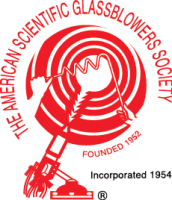Physical Chemistry for the Scientific Glassblower
Dr. Mario Affatigato Mario AffatigatoDr. Mario Affatigato obtained his undergraduate degree from Coe College in 1989, followed by his Ph.D. from Vanderbilt University in 1995. After returning to Coe that same year, he began a research effort investigating the relationship between the optical properties and structure of glassy materials. The work he continues with his students (over 70 to date) has expanded into laser-induced modification and exotic manufacturing methods like aerolevitation. Dr. Affatigato is now in his twentieth year at Coe and maintains a very active research program that involves over ten students every summer and over 90 published articles. He heads Coe’s Center for the Study of Glass, and he is also the Site Director of Coe’s Research Experiences for Undergraduates, one of the few national NSF sites at a small college. His research primarily deals with oxide glasses, especially vanadates, borates, and samples with heavy metals. Dr. Affatigato is a past recipient of a PECASE award from the National Science Foundation (NSF), as well as other research grants from NSF and the Research Corporation in support of his work. He is an active member of the American Ceramic Society, where he is a Fellow and past chair of the Glass and Optical Materials Division, and the American Physical Society. He also has outstanding collaborations with researchers in Nagaoka, Japan; Modena, Italy; Corning, NY; and Argonne National Laboratory in the US. Topics that may be covered include the following: TOPICS Most relevant: Glass Formation Glass Thermodynamics and kinetics Tempering (Thermal) Annealing of glass Crystallization of Glass Phase Separation Glass properties Density Thermal properties Coefficient of Thermal Expansion Diffusion Optical properties Chemical durability Biological applications (radiation therapy glass spheres, glass wool for wounds) Chemical strengthening Industrial applications (including fibers) Other cool glass applications Of lesser interest Study of glass using Raman, FTIR, NMR, calorimetry, and scanning electron microscopy Packing of atoms in a glass Nonlinear optics If there are any topics you would really be interested in (even if not listed here) please send you request to Benj Revis

